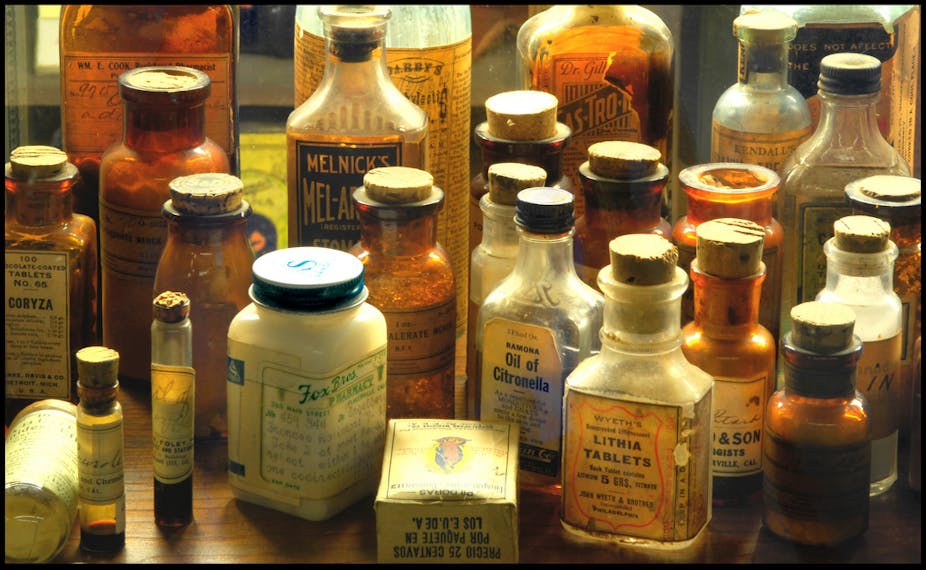While drizzling treacle on your porridge or spreading it on your toast, you might consider the time when the calorie-laden condiment was an antidote for poison. Of course, these days the crushed vipers that supposedly gave theriac or theriacle (as it was known) power are off the ingredient list, but treacle’s fall from favour illuminates an important aspect of the debate around teaching courses in complementary and alternative medicine (CAM) at university.
This debate started when the newly formed Friends of Science in Medicine (FSM) called for universities to not teach CAM courses. But the articles that followed and the comments they’ve attracted reveal some confusion about the aims of the group. Their call is not to end research into the various modalities under the CAM umbrella; they’d like universities to not set up programs giving CAM vocational degrees.
This difference is the same as the one between teaching about astrology, and teaching a vocational course to produce astrologers. I don’t introduce astrology as a distraction. Astrology was once one of the four pillars of western medicine, and one of Galileo’s duties as a mathematician at Pisa was to teach it to medical students.

Those same students would prescribe medicinal treacles, and Venetian treacle (comprising of more than 50 ingredients, including crushed vipers) was particularly prized. Although it was meant to treat the poisoned, treacle was enjoying a renaissance as a treatment for plague at the time.
Astrology is no longer part of modern medicine, despite it being very popular and many people swearing by astrological predictions. Similarly, treacles are no longer part of medicine despite nearly 2,000 years of enthusiastic use and testimonies by famous physicians of antiquity.
No law of similarity
Herbal medicines are often used as a justification for teaching CAM in universities. Undoubtedly, many herbal medicines work – willow bark for headaches; foxglove extract for heart failure and; artemesinin for malaria. There is, in fact, an entire branch of medicine dedicated to finding active pharmaceuticals from natural sources (pharmacognosy) and about one in four current medicines are based on natural products.
But while there are many herbal medicines that work, there are many others that don’t. The medicinal treacles are a historical example, but there’s very strong evidence that echinacea, a herb used for preventing colds and flus, doesn’t work. But it’s still recommended by many complementary medicine practitioners.
This brings us back to what universities should teach. Universities have a variety of goals, one of the most important being to make their graduates capable of critical, independent thought. This is true of the vocational courses such as medicine, dentistry and nursing.

So what would a vocational course in CAM look like if they applied this principle? CAM consists of a variety of modalities, from herbalism, which has reasonably strong evidence for some of its treatments; to acupuncture, which has very weak evidence that it might work in very limited circumstances; to practices such as reiki and homeopathy, where there’s strong evidence they do nothing at all.
A true university course in CAM should look critically at these modalities, and the evidence for them, rather than just reiterating traditional teachings. In the end, there’d likely be very little left to teach because the fact that some herbs are therapeutic doesn’t justify other modalities.
Revealing hidden harms
More than half of all Australians use a CAM modality in any given year, and as most people don’t tell their medical practitioners about it (they don’t see herbal medicines as drugs). This can have a serious impact on patient health.
The classic example of such harm is from St. John Wort, a herb that’s an effective antidepressant, but can interact with other drugs to cause failure of HIV therapy and anti-rejection drugs (for organ transplants) among other serious side effects. We should make those studying health care aware of these issues, but this is very different to teaching a vocational course in CAM.

At the heart of this debate is our desire for autonomy in health-care decisions, but appeals to ancient traditions and popularity are not sufficient to establish vocational courses. Remember treacle? Its use was a 2,000-year-old tradition, and it was highly popular, with extensive testimonials. But it didn’t work for curing the plague or venomous bites.
Our ancestors weren’t stupid, and were keen observers of the natural world. Yet they were completely wrong about medicinal treacle. Treacle recipes could be very different (not all contained crushed vipers, for instance), but they all contained opium, sometimes in heroic amounts. While opium had no effect on the plague bacillus or viper venom, it did provide symptomatic relief, fooling generations.
What this shows is humans can fool themselves very easily, especially when faced with intractable conditions, where hope can blind us to reality. Conventional medicine has spent centuries developing ways to reduce the chances of fooling ourselves – the double-blind placebo-controlled trial being one important (but not the only) way. CAM avoids these measures.
So as you eat your breakfast, you may reflect that promoters of teaching vocational CAM courses in universities should be careful what they wish for. A rigorous, evidence-based university course would be devoid of the majority of CAM modalities – like your treacle is devoid of vipers’ flesh.

